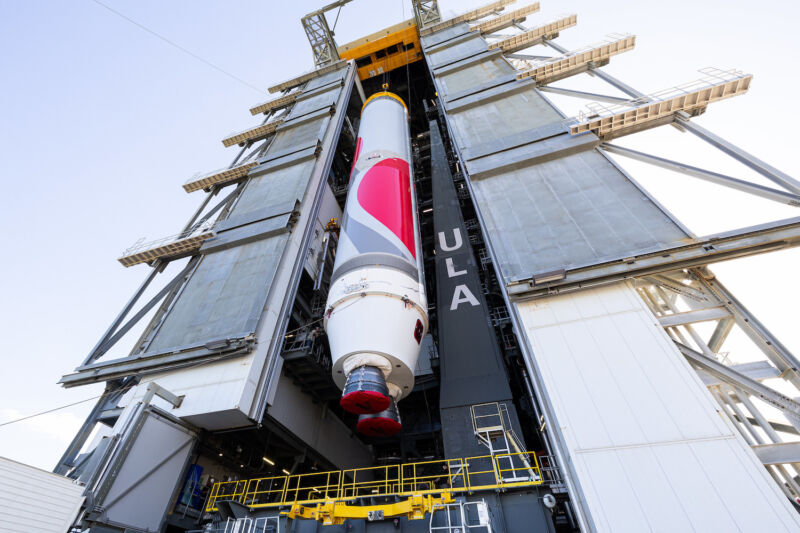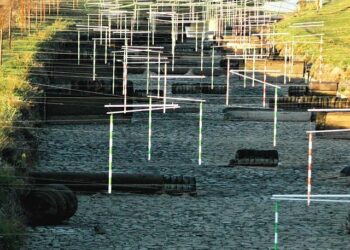
Enlarge / The first stage for ULA’s Vulcan rocket was lifted onto its launch platform at Cape Canaveral in January.
Three days at Christmastime will be the final chance for United Launch Alliance to get its new Vulcan rocket off the ground this year, the company’s chief executive announced Tuesday.
Still waiting for delivery of an upper stage and a final round of qualification testing following a test mishap earlier this year, Tory Bruno, ULA’s CEO, told CNBC on Tuesday that the Vulcan rocket’s first demonstration flight is scheduled for launch December 24. There are two backup launch dates available December 25 and 26, or else the launch will have to wait until January.
There are threats to this schedule, but ULA officials were confident enough in the timeline to publicly disclose the launch date Tuesday. They have also told Astrobotic, which is flying its first commercial Moon cargo lander on the inaugural Vulcan rocket, to ship its spacecraft from the company’s Pittsburgh headquarters to Florida in anticipation of a December launch.
“We need to finish building our upper stage and ship it down there (to Cape Canaveral),” Bruno told CNBC. “There’s some qualification testing in parallel. Both of those get done in November. The booster is already there ready to go, and the reason it’s Christmas Eve is because of science, orbital mechanics.
“If for some reason anything happens, bad weather, there’s some delay in shipping the stage, we can move into January, where there’s another similar window,” Bruno said.
Tight launch windows
There are only a few days each month that the Vulcan rocket can take off. That’s not the fault of ULA, but a constraint imposed by its payload. Astrobotic’s robotic Peregrine lander will aim for landing at a region on the near side of the Moon known as the Gruithuisen Domes, the location of an ancient eruption of thick lava that solidified into steep rocky mounds.
Astrobotic wants to have good lighting at the landing site when it arrives, allowing the company’s solar-powered Peregrine lander to return scientific data from a suite of NASA instruments.
In February, United Launch Alliance—a 50-50 joint venture between Boeing and Lockheed Martin—announced May 4 as the target launch date for the first Vulcan rocket.
But ULA soon scrapped that schedule after a test unit of the Vulcan rocket’s Centaur upper stage exploded during a pressure test in Alabama in late March. ULA’s launch team at Cape Canaveral, Florida, continued testing the Vulcan’s first stage, with a brief but flawless firing of its two Blue Origin-built main engines on the launch pad in June. Since then, the Vulcan launch campaign in Florida has been pretty much at a standstill.
Engineers traced the cause of the Centaur explosion to a combination of higher-than-anticipated stress near the top of the liquid hydrogen propellant tank and slightly weaker welding. The upper stage designed for the Vulcan rocket is called the Centaur V. It’s a wider, twin-engine version of the Centaur upper stage that’s been reliably flying on several types of rockets since the 1960s.
ULA sent the Centaur V upper stage that was already at Cape Canaveral for the first Vulcan launch back to the company’s factory in Decatur, Alabama, for modifications to ensure it won’t succumb to high pressures. It will fly on a future Vulcan mission, while the factory team brought forward another Centaur V, with additional stainless steel reinforcers on its forward dome, on the production line to fly on the first Vulcan rocket.
>>> Read full article>>>
Copyright for syndicated content belongs to the linked Source : Ars Technica – https://arstechnica.com/?p=1978363































